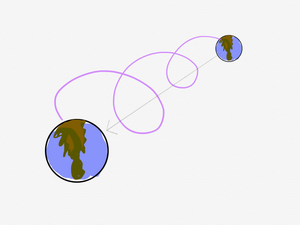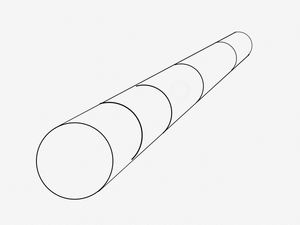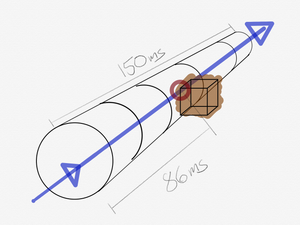How does Time Travel Work?
The theoretical basis for time travel was established by Drs Neil Bell and Chris Clarke, and you should consult their numerous papers on the subject if you wish to have a thorough analysis. This page presents only a lay overview.
First, to travel in time is to also travel in space. The Earth rotates about the Sun, which rotates around the galactic center of the Milky Way galaxy. The Milky Way is, of course, also in motion, inexorably moving away from the Big Bang.

Therefore, we need to know not just when we are going, but where.
A problem arises, however, when we consider the form of our travel. Time travel, unfortunately, does not happen in an extra-dimensional reality. What actually happens is that the machine driving our journey—the Time-Space Manifold—creates a vortex through space and time. It helps to imagine this vortex as a tube, since this roughly matches its actual geometry.

This vortex actually intersects with space. Meaning: if there was an object in our path at any point in the past, we will run into that object. However, unlike driving a car or flying a plane, where a human could react to obstacles, the journey through the vortex lasts only milliseconds. So, imagine a journey that will only take 150ms, and 86ms into our journey, an object intersects our path:

This means that to avoid collision, we must route around this object. For some objects whose position we know (such as the moon, or artificial satellites), we can pre-plan our trip to avoid them. But space is filled with vast amounts of untracked objects. There isn't enough time during the flight for a real person to avoid these objects. Thus, we must create an automated flight plan that can react dynamically during the trip.
adjustment is distance - 2ms
adjustment-back is adjustment + 4ms
direction is 360° - position
send adjust vortex direction [
direction:direction
] in adjustment
send adjust vortex direction [
direction:direction
] in adjustment-back
This is overly simplistic, but gives the basic idea. A real flight plan will be much more involved.